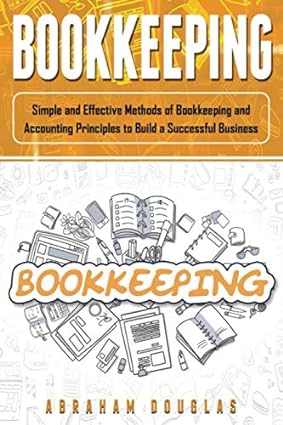Answered step by step
Verified Expert Solution
Question
1 Approved Answer
Hi-Tek Manufacturing, Incorporated, makes two types of industrial component parts-the B300 and the T500. An absorption costing income statement for the most recent period is
Hi-Tek Manufacturing, Incorporated, makes two types of industrial component parts-the B300 and the T500. An absorption costing income statement for the most recent period is shown: Hi-Tek Manufacturing Incorporated Income Statement Sales Cost of goods sold Selling and administrative expenses Gross margin Net operating loss $ 1,704,000 1,210,710 493,290 570,000 $ (76,710) Hi-Tek produced and sold 60,000 units of B300 at a price of $20 per unit and 12,600 units of T500 at a price of $40 per unit. The company's traditional cost system allocates manufacturing overhead to products using a plantwide overhead rate and direct labor dollars as the allocation base. Additional information relating to the company's two product lines is shown below: Direct materials Direct labor Manufacturing overhead Cost of goods sold B300 T500 $ 400,100 $ 162,700 $ 120,500 $ 42,300 Total $ 562,800 162,800 485,110 $ 1,210,710 The company has created an activity-based costing system to evaluate the profitability of its products. Hi-Tek's ABC implementation team concluded that $51,000 and $103,000 of the company's advertising expenses could be directly traced to B300 and T500, respectively. The remainder of the selling and administrative expenses was organization-sustaining in nature. The ABC team also distributed the company's manufacturing overhead to four activities as shown below: Activity Cost Pool (and Activity Measure) Machining (machine-hours) Setups (setup hours) Product-sustaining (number of products) Other (organization-sustaining costs) Total manufacturing overhead cost Required: Manufacturing Overhead $ 198,770 125,840 100,400 60,100 B300 90,800 Activity T500 62,100 76 210 1 1 Total 152,900 286 2 NA NA NA $ 485,110 1. Compute the product margins for the B300 and T500 under the company's traditional costing system. 2. Compute the product margins for B300 and T500 under the activity-based costing system. 3. Prepare a quantitative comparison of the traditional and activity-based cost assignments. Complete this question by entering your answers in the tabs below. Required 1 Required 2 Required 3 Compute the product margins for the B300 and T500 under the company's traditional costing system. (Round your intermediate calculations to 2 decimal places and final answers to the nearest whole dollar amount.) Product margin B300 T500 Total $ 0 < Required 1 Required 2 > Complete this question by entering your answers in the tabs below. Required 1 Required 2 Required 3 Compute the product margins for B300 and T500 under the activity-based costing system. (Negative product margins should be indicated by a minus sign. Round your intermediate calculations to 2 decimal places.) Product margin B300 T500 Total $ 0 < Required 1 Required 3 > Required 1 Required 2 Required 3 Prepare a quantitative comparison of the traditional and activity-based cost assignments. (Round your intermediate calculations to 2 decimal places and "Percentage" answers to 1 decimal place and and other answers to the nearest whole dollar amounts.) Traditional Cost System Amount B300 % of Amount T500 % of Total Amount Total cost assigned to products $ 0 $ 0 $ 0 Total cost Amount Activity-Based Costing System Direct costs: Indirect costs: $ 0 B300 T500 % of % of Total Amount Total Total Amount Amount Amount Total cost assigned to products Costs not assigned to products: $ 0 $ 0 0 Total cost $ 0 < Required 2 Required 3
Step by Step Solution
There are 3 Steps involved in it
Step: 1

Get Instant Access to Expert-Tailored Solutions
See step-by-step solutions with expert insights and AI powered tools for academic success
Step: 2

Step: 3

Ace Your Homework with AI
Get the answers you need in no time with our AI-driven, step-by-step assistance
Get Started


